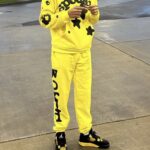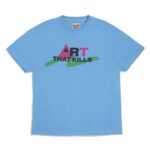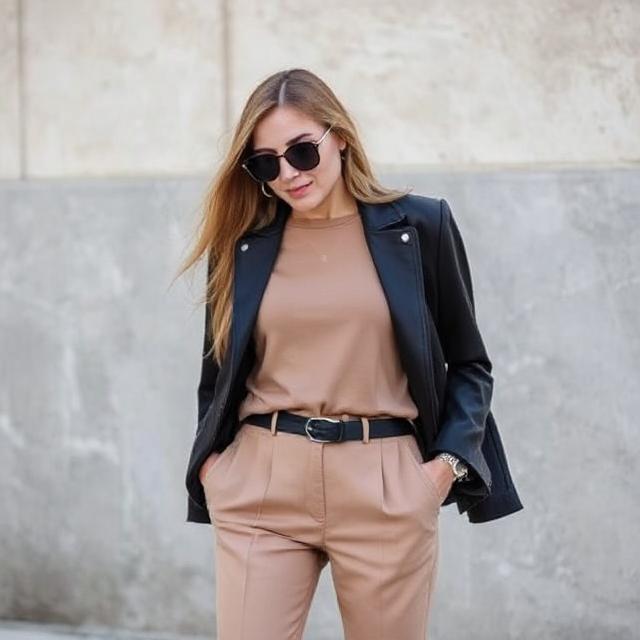Fashion is often seen as a surface-level concept—just clothes, shoes, and accessories. But fashion is much more than that. It’s part of how we express ourselves, how we interact with our environment, and how we communicate without saying a word. Whether you’re into streetwear, minimalism, vintage looks, or practical everyday outfits, fashion plays a role in how you move through the world.
In this blog post, we’ll explore the real impact of fashion. We’ll look at where trends come from, why fashion matters beyond the runway, how the internet has changed the game, and how fashion fits into other parts of daily life—sometimes in surprising ways.
Where Fashion Trends Really Come From
Fashion doesn’t just appear out of thin air. Trends evolve from a mix of cultural movements, global events, social media influence, and even economic changes. The way people dress in one part of the world can influence the entire industry.
What Influences Trends?
-
Pop culture: Music, movies, and celebrities often spark new trends. When a high-profile artist wears a unique outfit on tour or in a music video, fans take notice.
-
Historical comebacks: Styles from previous decades come back around. Think bell-bottom jeans or 90s grunge—it all comes back in cycles.
-
Social movements: Activism, sustainability, and gender identity are increasingly shaping how people approach fashion.
-
Technology: Innovations like 3D printing or virtual try-ons are transforming both design and shopping experiences.
Trends can also begin at the grassroots level. Street fashion seen in everyday life often inspires high fashion. Designers look to real people and subcultures for inspiration—not just glossy magazines or exclusive fashion shows.
Why Fashion Matters in Everyday Life
Fashion is personal. It’s what you choose to wear to work, to a concert, or on a casual day at home. It’s not just about aesthetics—it affects your mood, confidence, and even how people perceive you.
The Power of Clothing Choices
-
Self-expression: Clothing is a way to show who you are without having to speak. Colors, patterns, and brands say something about your personality and interests.
-
Cultural identity: Traditional clothing can represent heritage and community. Wearing certain styles is a way to honor where you come from.
-
First impressions: People often form quick opinions based on what you’re wearing. That may not always be fair, but it’s a real part of social interaction.
-
Functionality: What you wear affects your comfort and how you perform certain tasks—whether it’s working out, commuting, or staying warm in winter.
The truth is, you don’t need to be “into fashion” to be part of it. Every decision you make about your outfit—down to choosing sneakers or boots—is a part of the broader fashion conversation.
Fashion and the Internet: A Game Changer
The rise of the internet has completely changed how we experience fashion. From online shopping to social media influencers, the digital space is now central to how trends spread and how people engage with clothing and style.
How Digital Culture Influences Fashion
-
Online platforms: Instagram, TikTok, and Pinterest are driving forces for what’s “in.” You don’t have to wait for a magazine to publish the latest looks—fashion is happening in real time.
-
E-commerce: Shopping from a website or an app is now more common than visiting a physical store. This includes everything from small boutiques to big brands and even niche markets like a vape store online offering fashionable accessories or branded gear.
-
Influencers: People with large followings often act as tastemakers. A single post can launch a micro-trend within hours.
-
Style diversity: Online communities allow for more varied fashion content. You can find inspiration no matter your size, background, or aesthetic.
The democratization of fashion has made it easier for people to access new styles and ideas from around the world. It’s no longer limited to cities known for fashion like New York, Paris, or Milan—anyone, anywhere can take part in setting the trends.
The Connection Between Fashion and Other Parts of Life
Fashion doesn’t exist in a vacuum. It’s connected to other industries, from music and art to technology and even wellness. Let’s look at how fashion intersects with different areas of our lives.
Everyday Connections
-
Workwear and productivity: The shift to remote work changed how we dress for work. Comfort became a priority, leading to a rise in athleisure and minimalist wardrobes.
-
Health and wellness: Sustainable fabrics and ethical production are becoming more important. People want to know that their clothes aren’t harming the planet or the people who made them.
-
Entertainment: Red carpet events and music festivals often set the tone for what’s fashionable each season.
-
Subcultures: Skate, punk, hip-hop, and goth styles have all influenced mainstream fashion at some point. These groups create their own visual language through what they wear.
-
Consumer habits: Shopping habits reflect values. Whether you support fast fashion, buy second-hand, or look for local brands, your choices impact the fashion industry.
Fashion, in this sense, is a mirror of broader social trends. It’s both influenced by and influences the world around us.
Closing Thoughts
Fashion is more than what’s on the runway. It’s the clothes you choose in the morning, the way you express yourself, and the tools you use to navigate everyday life. It can be functional, expressive, cultural, or all of these at once. And in a world where identity and appearance are deeply connected, fashion gives everyone a chance to have a voice—even without speaking.
Whether you’re shopping for your next wardrobe staple or browsing a vape store online for accessories that fit your style, your choices reflect your identity. You don’t need to follow every trend or spend a fortune to be fashionable. What matters is knowing what makes you feel comfortable, confident, and authentic.
And for those in the industry—whether you’re running a boutique, launching a blog, or diving into vape wholesale USA with fashion-forward accessories—the message is the same: fashion is about connection. To others. To culture. And most importantly, to yourself.
- Why Fashion Matters in Everyday Life - Try Some New
- Fashion is personal. It’s what you choose to wear to work, to a concert, or on a casual day at home. It’s not just about aesthetics—it affects your mood, confidence, and even how people perceive you.
- fashion
Related posts:
 Essentials Hoodie | Official Fear Of God Store | Essentials Clothing
Essentials Hoodie | Official Fear Of God Store | Essentials Clothing
 Is Hairdreams MicroLine a Good Fit for Dallas Women with Early Hair Thinning?
Is Hairdreams MicroLine a Good Fit for Dallas Women with Early Hair Thinning?
 Maxi Dresses for Women: Timeless Style with Sleeveless, Floral & Vacation Looks
Maxi Dresses for Women: Timeless Style with Sleeveless, Floral & Vacation Looks
 Essentials Hoodie – Elevate Your Look with Everydays Comfort
Essentials Hoodie – Elevate Your Look with Everydays Comfort
 What Are the Common Mistakes in Custom Boxes Market Design ?
What Are the Common Mistakes in Custom Boxes Market Design ?
 Sp5der Clothing The Streetwear Label Taking Over with the Iconic Sp5der Hoodie
Sp5der Clothing The Streetwear Label Taking Over with the Iconic Sp5der Hoodie
 intage vibes, redefined. The 80’s Gallery Dept T-Shirt channels the rebellious spirit of a golden era
intage vibes, redefined. The 80’s Gallery Dept T-Shirt channels the rebellious spirit of a golden era
 Why Baby Car Seat Covers for Boys Are a Must-Have for Every Parent
Why Baby Car Seat Covers for Boys Are a Must-Have for Every Parent







